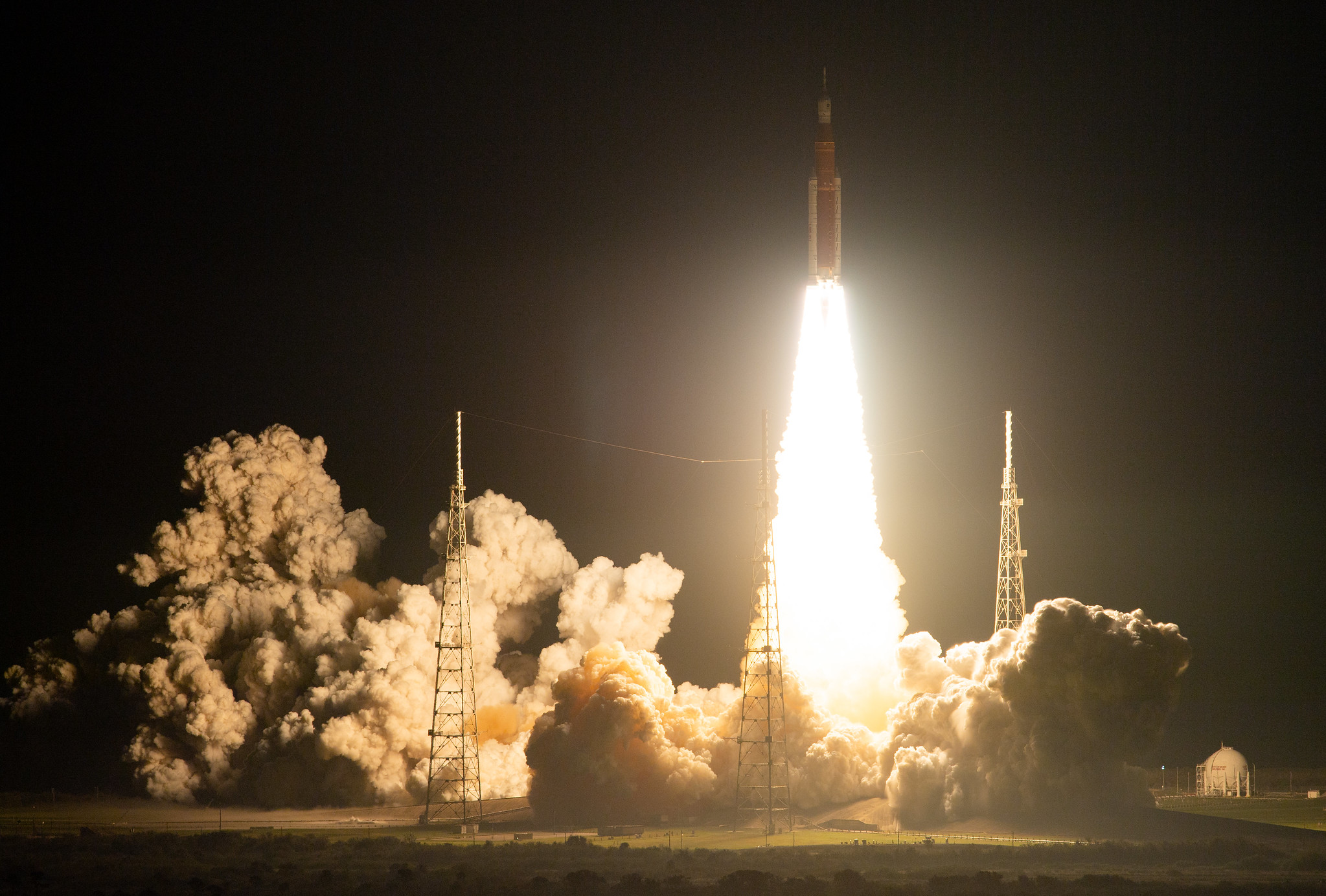
NASA's Space Launch System (SLS) megarocket hit all of its marks during its first-ever liftoff two weeks ago, agency officials said.
That Nov. 16 launch kicked off NASA's highly anticipated Artemis 1 mission, sending an uncrewed Orion capsule on a nearly 26-day trek to the moon and back. The SLS appeared to perform exactly as planned during the liftoff, and further analyses support those initial impressions, NASA officials announced on Wednesday (Nov. 30).
"The first launch of the Space Launch System rocket was simply eye-watering," Artemis mission manager Mike Sarafin said in a statement.
"While our mission with Orion is still underway and we continue to learn over the course of our flight, the rocket's systems performed as designed and as expected in every case," he added.
In photos: Amazing views of NASA's Artemis 1 moon rocket debut
The SLS, a key piece of hardware for NASA's Artemis moon program, is now the most powerful rocket ever to launch successfully. The huge rocket took the mantle from the iconic Saturn V, which sent Apollo astronauts to the moon in the late 1960s and early 1970s.
During liftoff on Nov. 16, the SLS generated 8.8 million pounds of thrust. About 7 million came courtesy of the vehicle's two solid rocket boosters (SRBs), which were strapped on to the SLS core stage.
Get the Space.com Newsletter
Breaking space news, the latest updates on rocket launches, skywatching events and more!
The SRBs performed exactly as planned; mission team members have identified no issues with them or any of their subsystems, NASA officials wrote in Wednesday's update.
The SLS core stage, powered by four RS-25 engines left over from the space shuttle era, met expectations as well. The RS-25s kept firing for nearly six minutes after the SRBs were jettisoned, ultimately delivering Orion to within about 3 miles (4.8 kilometers) of its target orbit around Earth, a highly elliptical path that took the capsule as close as 18 miles (29 km) to our planet and as far away as 1,120 miles (1,800 km), NASA officials said.
The SLS upper stage, which is powered by a single RL-10 engine, took over from there, performing one orbit-raising burn and then a record-breaking 18-minute firing that sent Orion on its way to the moon. The upper stage, too, did its job well.
"Performance was off by less than 0.3% in all cases across the board," Sarafin said.
Orion's performance has team members raving, too, but the capsule still has a lot of work ahead of it. Orion is scheduled to depart lunar orbit on Thursday afternoon (Dec. 1) and come back to Earth 10 days later, splashing down in the Pacific Ocean to wrap up the Artemis 1 mission.
NASA engineers and mission planners will doubtless pore over the data for months after that, making sure that both Orion and the SLS are ready to carry humans. The duo is slated to do just that on Artemis 2, which will send astronauts around the moon in 2024, if all goes according to plan.
The early returns are providing reason for optimism that NASA could indeed hit that launch target.
"With this amazing moon rocket, we’ve laid the foundation for Artemis and for our long-term presence at the moon," John Honeycutt, SLS program manager at NASA's Marshall Space Flight Center in Huntsville, Alabama, said in the same statement. "The performance of the rocket and the team supporting its maiden voyage was simply outstanding."
Mike Wall is the author of "Out There" (Grand Central Publishing, 2018; illustrated by Karl Tate), a book about the search for alien life. Follow him on Twitter @michaeldwall. Follow us on Twitter @Spacedotcom or Facebook.
Join our Space Forums to keep talking space on the latest missions, night sky and more! And if you have a news tip, correction or comment, let us know at: community@space.com.

Michael Wall is a Senior Space Writer with Space.com and joined the team in 2010. He primarily covers exoplanets, spaceflight and military space, but has been known to dabble in the space art beat. His book about the search for alien life, "Out There," was published on Nov. 13, 2018. Before becoming a science writer, Michael worked as a herpetologist and wildlife biologist. He has a Ph.D. in evolutionary biology from the University of Sydney, Australia, a bachelor's degree from the University of Arizona, and a graduate certificate in science writing from the University of California, Santa Cruz. To find out what his latest project is, you can follow Michael on Twitter.









